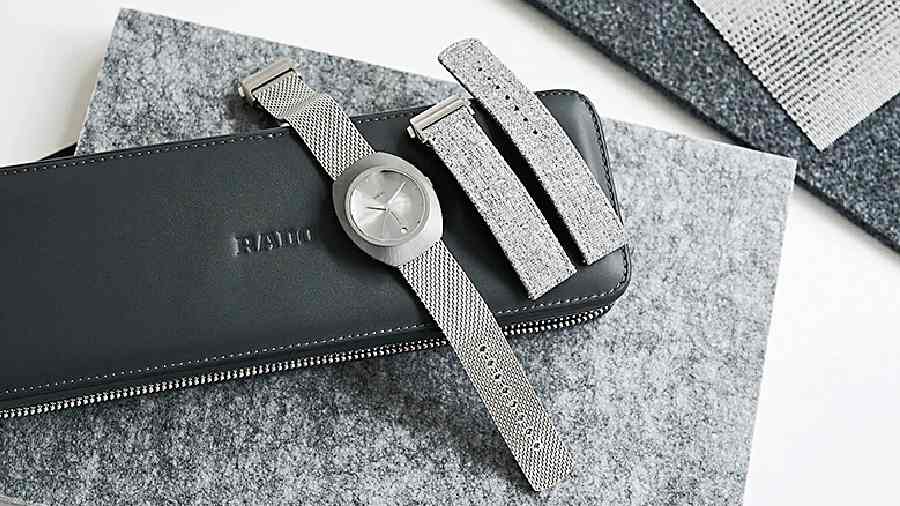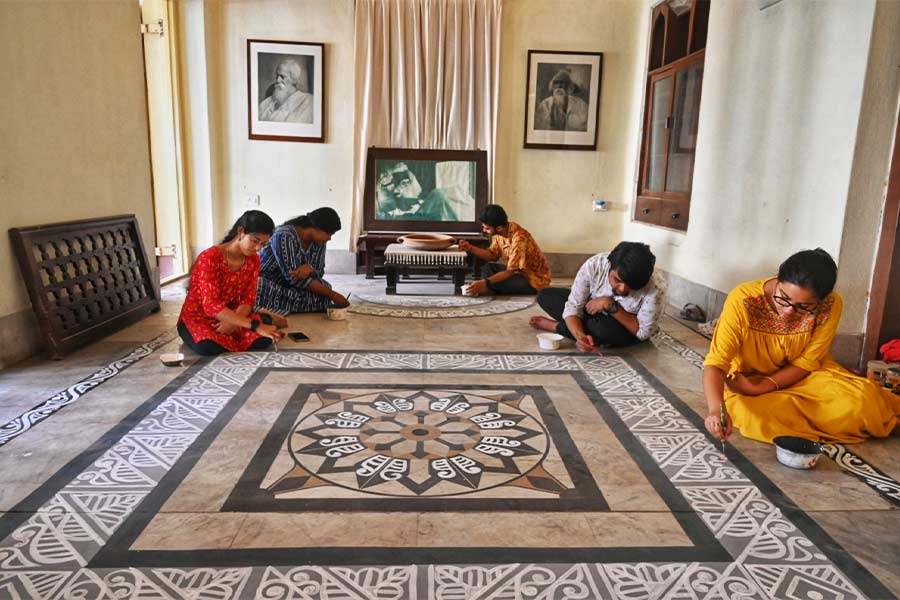Luxury watchmaker Rado’s 60th Anniversary Edition of the DiaStar Original watch is in collaboration with Swiss Argentinian product designer Alfredo Häberli. The Zurich-based artist has on his CV names like Alias, BD Barcelona, BMW, Camper, FSB, Georg Jensen, Iittala, Kvadrat, Luceplan, Moroso, Schiffini and Vitra. In a chat with The Telegraph, Häberli talks about the new sleek watch, his design philosophy and more.

Alfredo Häberli
The 60th Anniversary Edition of the DiaStar Original looks sleek and contemporary. How did you mould your aesthetics of minimalism to design it?
In my work as a designer I’m always trying to combine tradition and innovation with joy and energy, and the anniversary edition is no exception. In essence, the point was to take the features of the original DiaStar and give it a contemporary form. So there’s been a minor geometric adaptation of the case to make it look more elegant and lighter. The faceted cut of the watch glass was reinterpreted in a hexagonal form meant to highlight the 60th anniversary.
The hands and date display were designed to look as modern and abstract as possible. With every product, I try to add value, which lies in the everyday usefulness of the design. For the DiaStar that means you have to be able to wear it on different occasions, so it comes with two alternative straps and a leather case that can be used as protection while travelling.
Was there a brief from Rado?
There was no detailed briefing from Rado. It was much more a question of bringing every detail of the original DiaStar into the present day with care and dignity while modifying as much as possible in an invisible way.
Can you tell us about the design details?
The Rado DiaStar 60th Anniversary Edition was designed with the goal to revisit the model, with subtle but notable changes to mark its 60th anniversary, to keep the strong personality of its predecessor, while also adding the best and latest innovations. At the heart of the watch lies an automatic movement, which ensures precision and accuracy in timekeeping. The geometry and shape of the watch case, combined with the unique Ceramos material, make the watch lightweight, yet incredibly durable and scratch-resistant. The dial of the watch is metallic grey and circular brushed, with dot indexes filled with the natural colour SuperLumiNova. It also features a silver-coloured moving anchor symbol on a metallic grey background, a grey-printed Rado logo and rhodium-coloured hands. The sapphire crystal glass is not only scratch-resistant but also antireflective, making it easy to read the time in any lighting conditions. The Rado DiaStar 60th Anniversary Edition is a beautiful and functional watch that is sure to impress both watch enthusiasts and fashion-forward individuals alike.
What does a watch represent to you in present times when so many no longer wear one?
You can find a public clock every few steps in Switzerland, whether it is on church towers, railway station facades or monuments. Every electronic device also provides a precise indication of the time, so I do not need a watch. Nevertheless, the most valuable resource remains limited time — the most expensive currency of all. This is exactly what I want to read from a beautiful mechanical watch. My fascination with such a small object is extraordinary: it charges itself, contains an incredible amount of mechanics in just a few millimetres of height, has a high degree of accuracy and a power reserve of 80 hours, is waterproof and scratchresistant and will always be with me for decades. All this can never be achieved by an electronic device that becomes obsolete after a short time.
The watch looks pretty masculine but is great to be worn with a power suit by a woman. Did you have gender fluidity in mind?
To my astonishment and surprise, my design is intangible like a chameleon. It fits well even on a fine wrist, has something jewel-like thanks to the faceting of the sapphire glass and is somewhat soft due to the fabric strap. The design is very gender-neutral because of the shades of grey and the matte and shiny surfaces. I was not interested in designing something purely masculine.
Do you love watches?
My enthusiasm for watches was awakened on my 18th birthday when my father gave me the watch his father had given him for his 18th birthday. That was the beginning of my fascination with watches and my passion for collecting them — preferably those from the late 1960s and early ‘70s. Since I opened my own design studio more than 30 years ago I haven’t kept up with the times, which means I don’t follow trends. But my never-ending dream was to design a watch.
Your signature minimalism is unmistakable. Has it always been the DNA?
In my work I am never interested in belonging to a certain ‘ism’, a stylism does not interest me. Rather, the terminology of DNA fits: I am interested in achieving as much as possible with as little resources as necessary. This goal can be reached, for example, through the choice of materials or by using as few lines as possible. This is what I call ‘the economy of means’ or more abstractly expressed, the weight of lightness.
Among the innumerable things and spaces you have designed, what has been truly challenging and satisfying?
Architecture is a matter of centimetres, industrial design deals in millimetres, and watch design takes every micron into account. First, you have to be able to see that clearly, but we were quick to adapt our approach to this scale. When I suggested to Rado that we give the anniversary edition a radically modern design, I grasped the opportunity and worked up the new case inside of two weeks. This trust and the exceptionally constructive collaboration with the project manager and engineers made it possible to “revolutionise” the watch — the word is perfectly accurate — in under a year. It also helped, of course, that I am so passionate about watches. It took only one year to develop this watch, but I’ve been engaging with watches for the last 40 years.
Which spaces intrigue you?
With great attention, I like to visit well-known and famous buildings from the history of architecture and observe how the spaces affect me. Today, architecture is often designed in such a way that the external appearance attracts the desired attention, which can also be well represented visually. But the feeling in a room must be experienced for oneself. I am particularly fascinated by this effect in small volumes because there it is much more difficult to realise. Giving a room a tangible soul remains a challenge that is rarely achieved, and these are the spaces I admire.
Is there a dream product that you would love to design?
In the last few years, I have been asked again and again by the industry to develop visions for the future: What does the ecological house of the near future look like? How will mobility and luxury in the automotive industry change? How will the kitchen of the future and the bathroom of tomorrow function? What impact will the pandemic still have on our world of work and the furniture we need? This search for orientation and solutions for the industry is hard work that is incredibly exciting. It takes courage to break new ground and find new ways — this has always been my dream. It is also a dream to think up things for children, because the rule is, either it suits them or it does not. If the children accept a design, then it is the most beautiful thing on earth.






